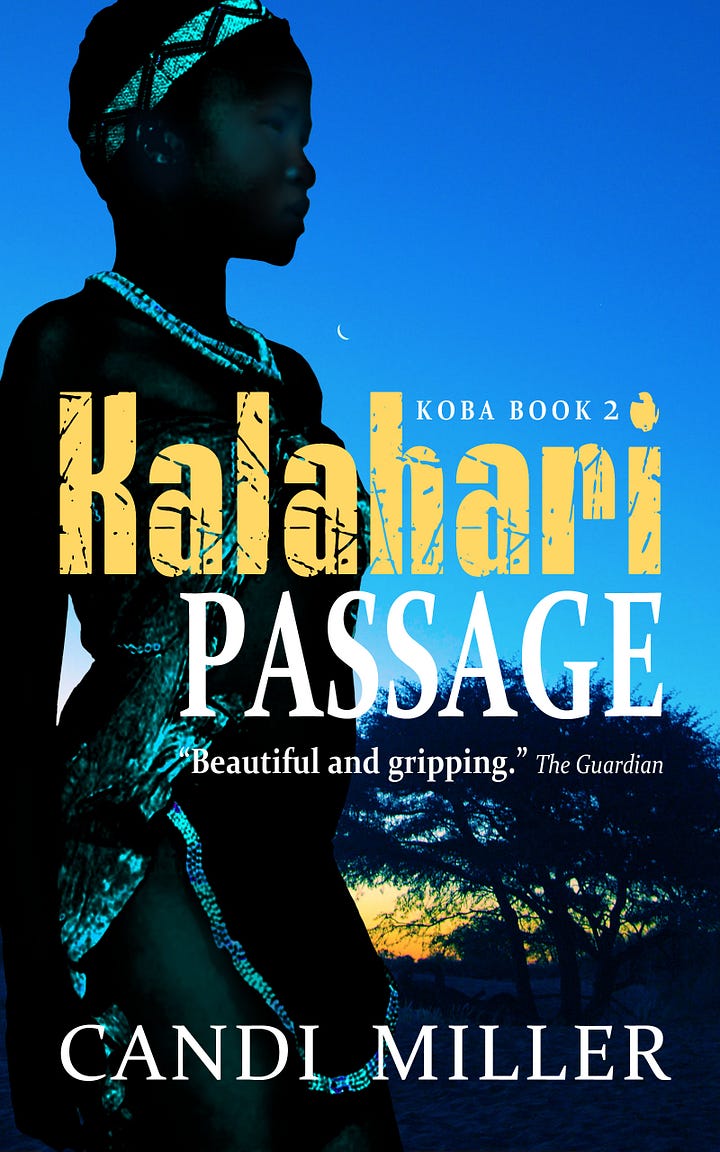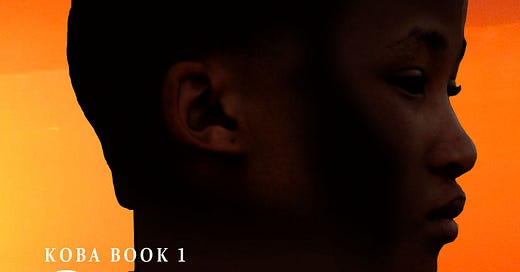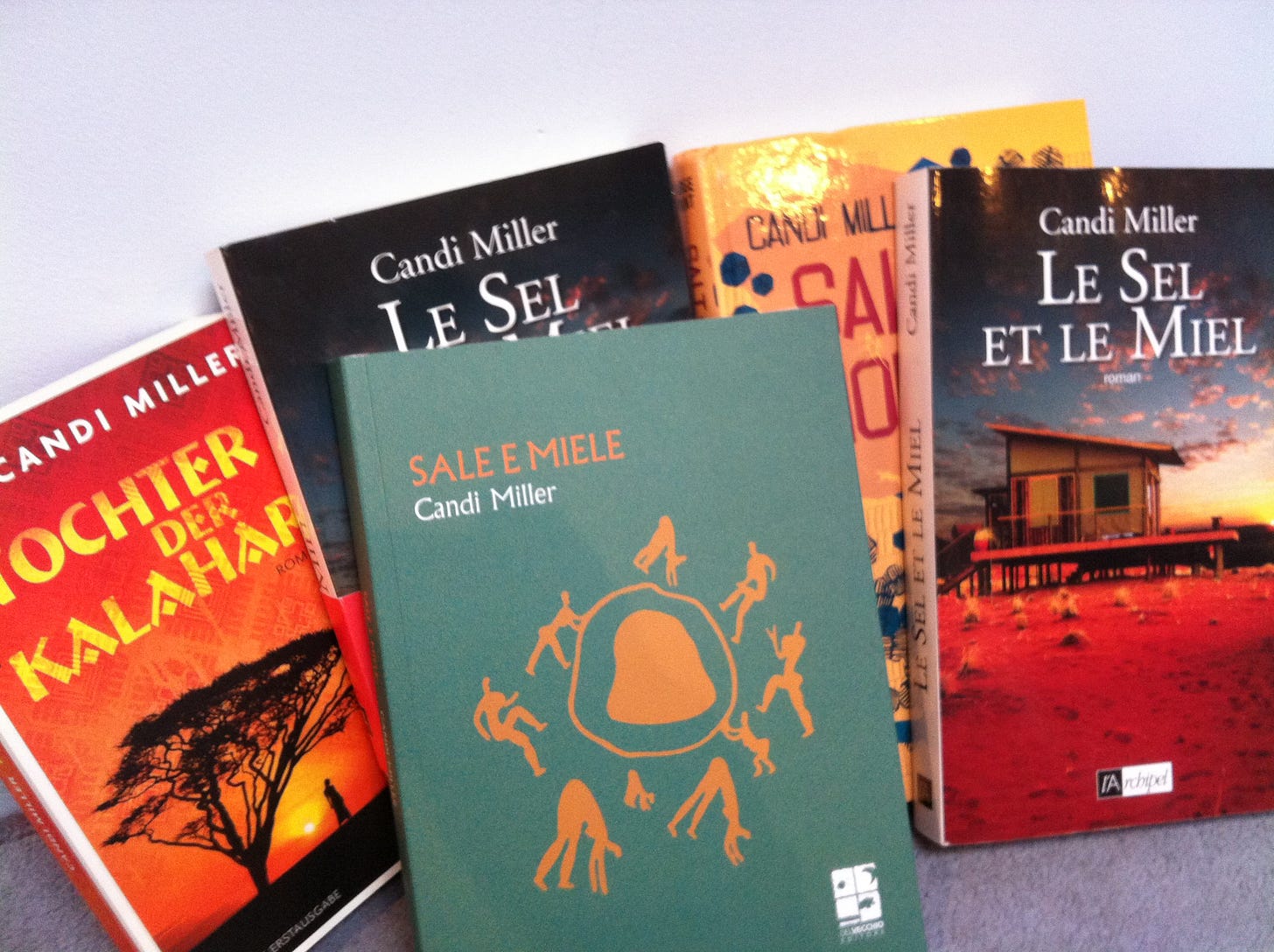Continuing the Q & A posed by Melissa Addey, writer of the Moroccan Empire series.
What inspired your Koba series?
My discovery that within the century I’d been born into (the 20th) in a country I lived in (South Africa) one could buy a hunting license to shoot a Bushman: 5 shillings for a male, six for a female and 7 for a large antelope.


What kind of research did I do?
More than 25 years-worth. I started pre-internet, so had to sneak into academic libraries where the anthropological texts about the San were. (The Ju|’hoan are a San or Bushman group, the most researched group of any indigenous people in the world.) I soon realised I needed to go and see this isolated world for myself, so taking the family savings and leaving my two small children with my mother-in-law, I set off for the Kalahari desert – one road in, dirt and dust all the way, a 4WD vehicle packed with fuel and water, and no Google map in those days.
I had epic adventures: near misses from charging bull elephant, escaping a massive veld fire, and finally, sitting around a Ju|’hoan camp fire watching the people tell their ancient folktales.
Which publishing routes have you taken for these books during their lifetime so far and why?
The first Koba book, Salt & Honey, was traditionally published in 2006. Its sequel, Kalahari Passage, came out with a different publisher in 2012. A few months after launch, that publisher went under. After a protracted battle with the dishonourable publisher my books were abducted by, I got my rights backs. In 2023 I was able to self-publish the prequel, Salt & Honey, fulfilling a promise to the Ju|’hoan community to support them in their effort to make their children “paper people”, i.e. reading-writing literate. Mother-tongue schools have been established and via fund-raising and book sales, I try to put food into the hostels so Kalahari kids don’t have to face the challenge of elephant, snake and lion on their daily commute to school. I have just self-published the sequel, Kalahari Passage, under my own imprint, Mongongo Books. I’m excited to offer these versions of my novels to readers, as they include endorsement by the community and are revised via the additional knowledge I’ve gained via my decades-long relationship with the Ju|’hoansi.
Chief Bobo’s blessing
This is Tsamkxao ǂOma, affectionately known as ‘chief’ [1] Bobo, who is head of the Ju|’hoansi Traditional Authority of Namibia. He’s endorsing my plan to re-publish my novels, Salt & Honey and Kalahari Passage, for the benefit of his community’s Village Schools
Choice of covers (current/past)
I was allowed a lot of input into my first book cover (Legend Press)– a woodcut of a Bushman woman. I liked it. My second publisher (Tindal Street Press,) decided to position my novels as romances and those versions of the books have covers I find schmaltzy. My latest novels have covers designed by a dear friend, Dianne Hambrook, whom I worked with in South Africa more than 40 years ago, and they capture my hero, Koba’s, quiet strength and vulnerability.
What do readers like best about your books?
Readers like Koba, my Ju|’hoan main character. They find her uniquely fascinating yet relatable. She’s challenged by political, historical and emotional events she has no control over, but using inherited wisdom, she survives. Readers also say they love the descriptions of the African bush, which is Koba’s world. The reader response I am most gratified by comes from the handful of San readers I’ve had. They say they are pleased to finally find a story about people like them.
‘Koba’s grandmother is like my own.’
N#aisa
Who do you wish you could meet from the books?
That grandmother, Koba’s, who is called Zuma. What a woman! A powerful spiritual medium and healer, a mesmerising story teller, she’s funny, bawdy and sexy to the last, and completely resigned to and unafraid of death.
Are there (perhaps older) books that feature your era/location/culture but in a minor or diminishing way?
If people know about the Bushmen of the Kalahari at all, it’s via the internationally popular works of Laurens van der Post. (1950s and 60s.) We now know that this so-called guru was, at best, a fantasist. (He is labelled a ‘fraud, a liar and a serial adulterer’ in a well-evidenced biography by J.D.F. Jones.) Van der Post had a sketchy knowledge of Africa and invented a Bushman nursemaid so he could claim intimate knowledge of the people and their ancient wisdom. I, and many researchers, dislike his patronising, pseudo-psychological depiction of San culture.
There are scores of academic, non-fiction books about every aspect of San life (I’ve studied dozens of them) but, to the best of my knowledge, no other fiction series where a young San woman is the central character.
Toni Morrison said: ‘if there’s a book you’d like to read and it hasn’t been written, write it.”
So I did.







